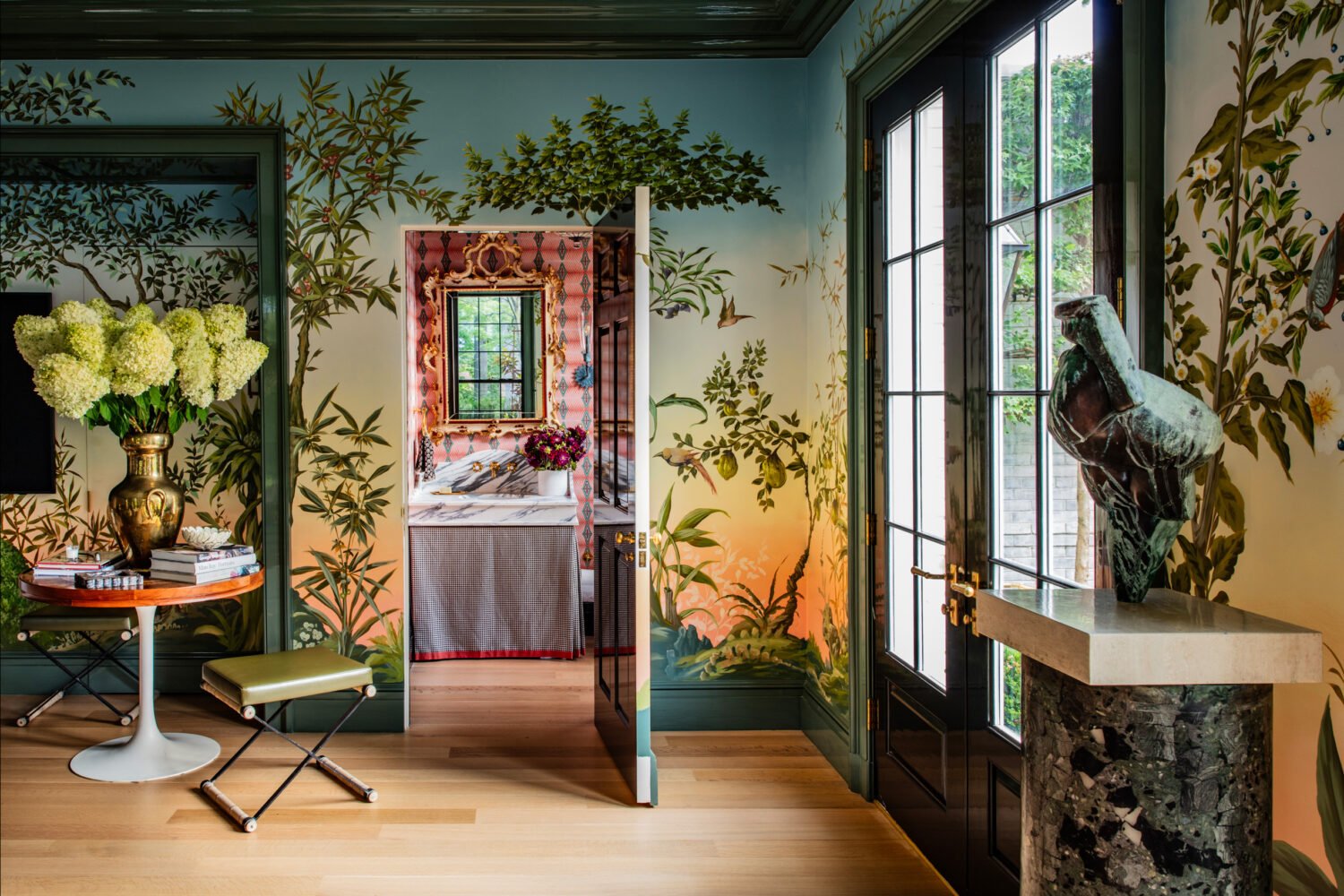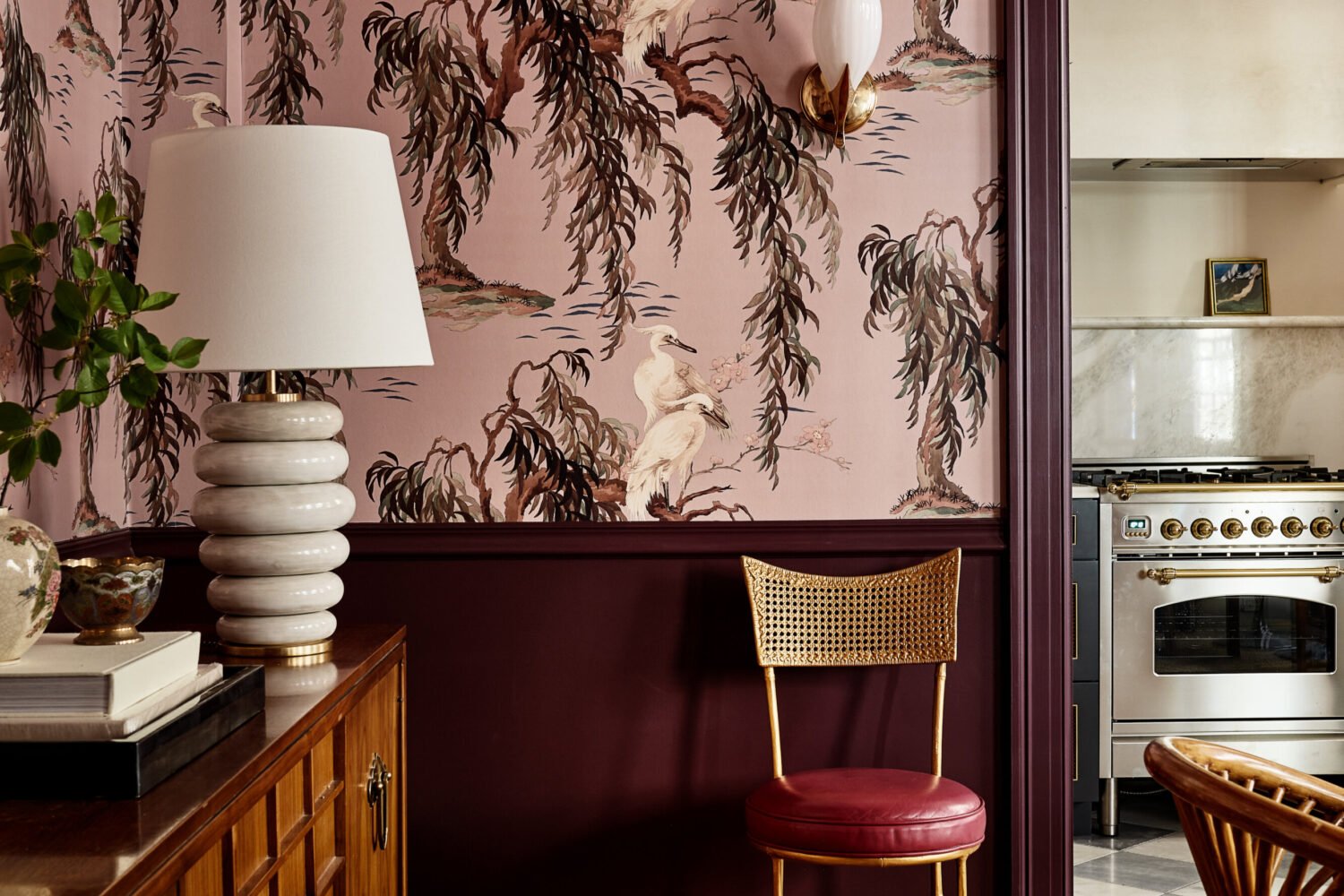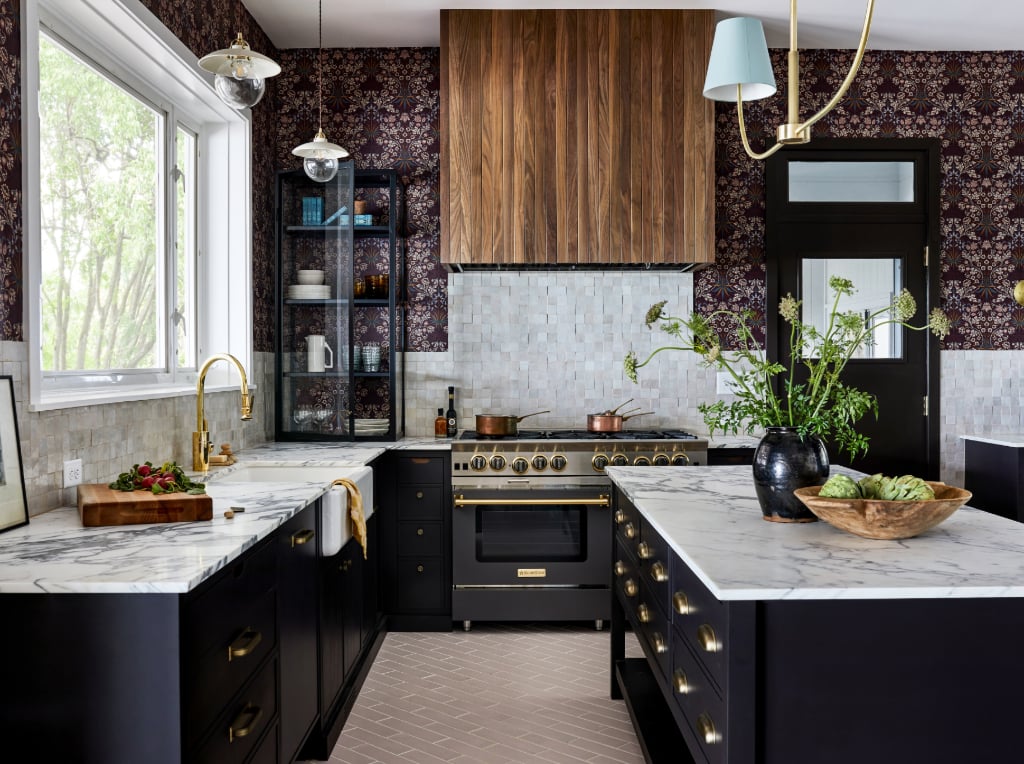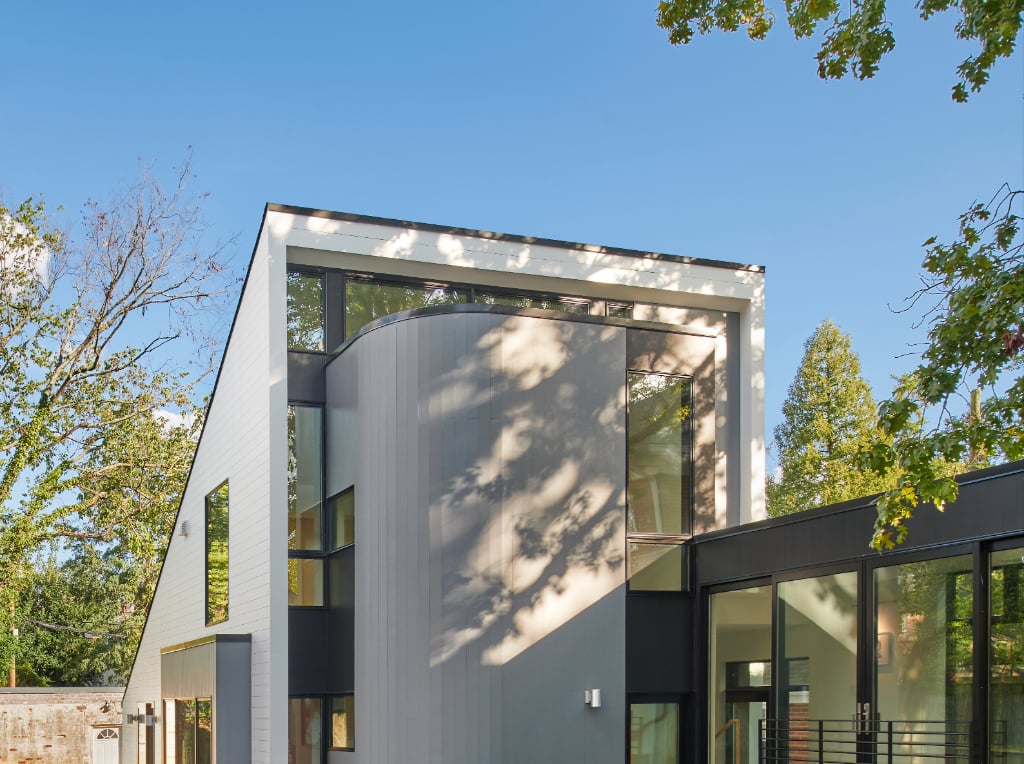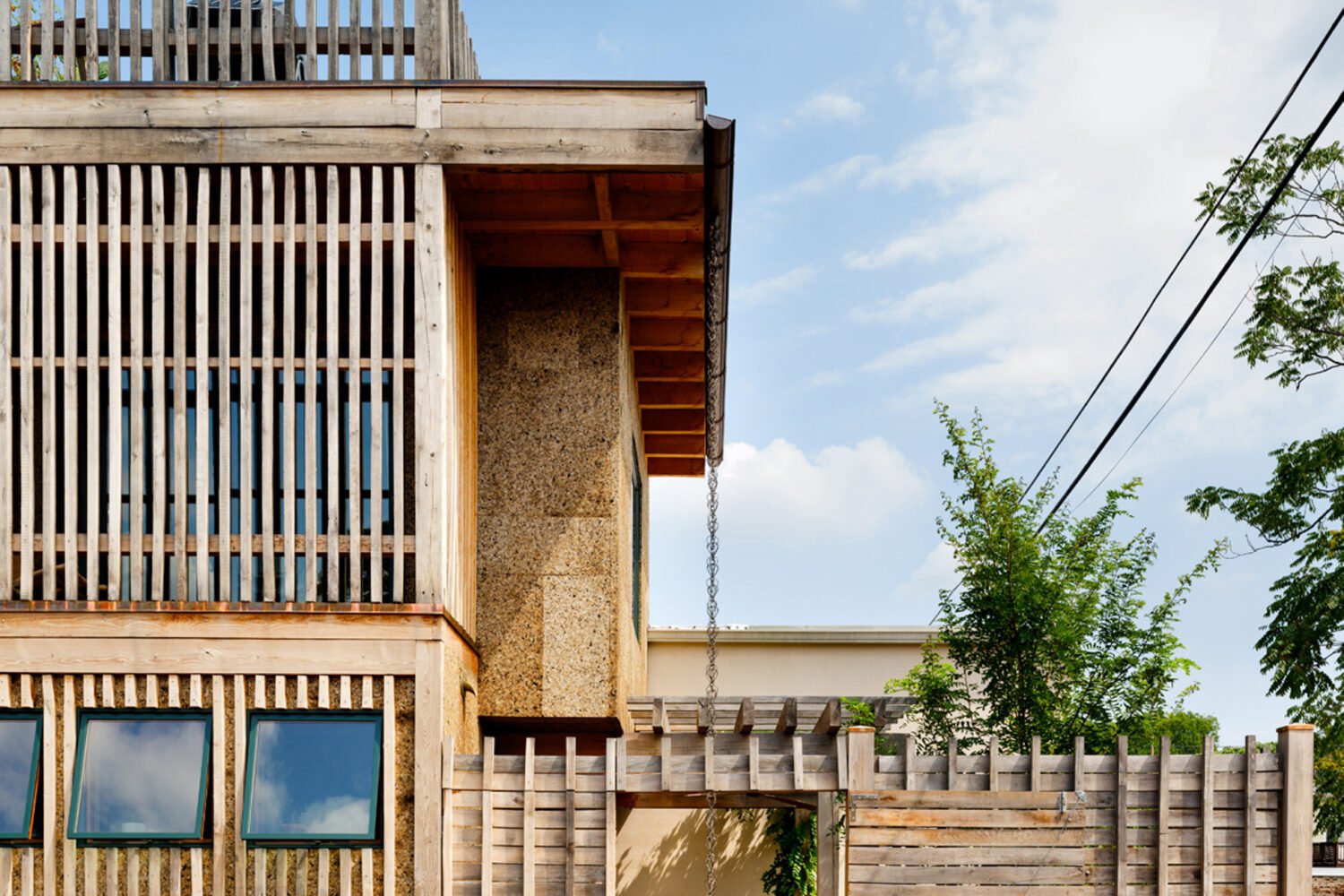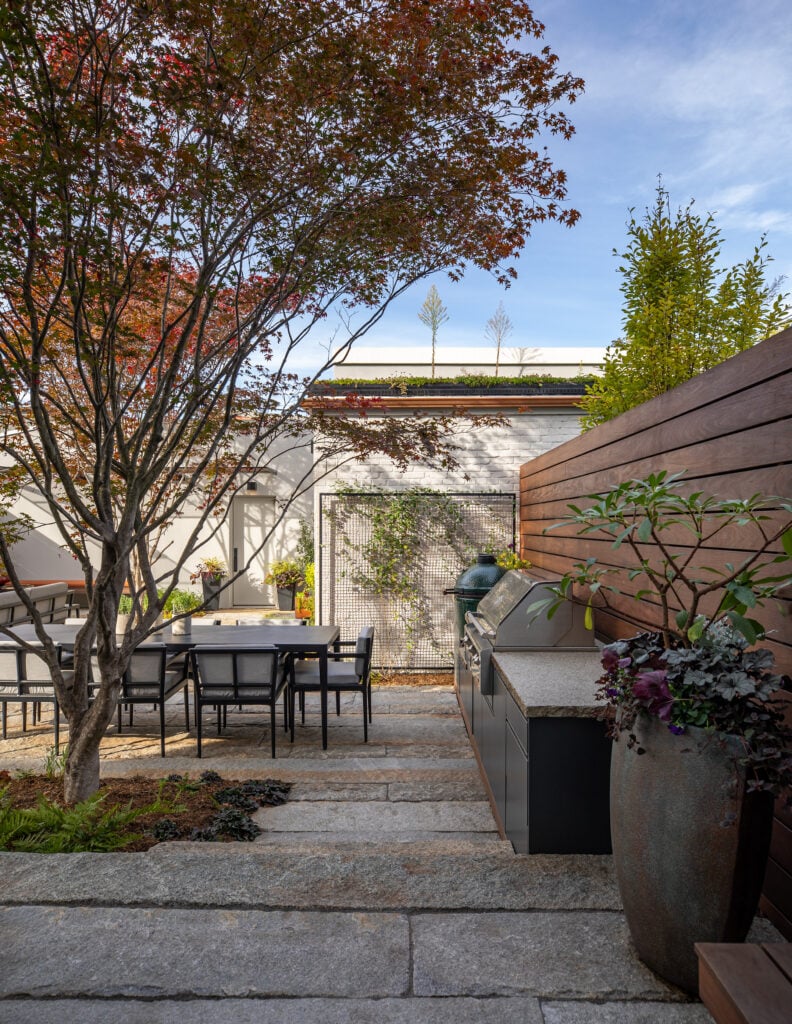
Landscape design in DC can be a tricky proposition. Many of us have a small postage stamp of a backyard, but we ask a lot of it. We may want to relax on the patio with a drink after work, cultivate a vegetable garden, have a spot to grill or eat with friends. When the home became a sanctuary during the pandemic, some of us decided to overhaul our outdoor spaces. “People were looking at their landscapes saying, okay, this is an opportunity to think about it in a different way, a more functional way,” says Ryan Moody, founding principal of Moody Graham, a DC landscape-architecture firm.
Maybe our yards felt a bit tired and needed an update. Or maybe following a drought we decided to go native, updating the garden with indigenous plants. Or maybe, if we had the space, we took the plunge and built a pool.
Post-pandemic, “things have not slowed down,” says Joseph Richardson, founding principal of Richardson & Associates Landscape Architecture, referring to the growing demand for landscape design. A couple trends he’s noticed: the rise of the outdoor kitchen (now largely considered a “requirement”) and an embrace of wellness. Saunas, cold plunges, hot tubs, steam showers in pool houses, bocce and pickleball and tennis courts—such amenities have boomed in the luxury market.
While those may be nonstarters for people with smaller yards (or budgets), we’ve compiled a list of ideas from some of the top landscape designers in the area that can be helpful for any size project—and give your outdoor space a summer refresh.
Home Grown
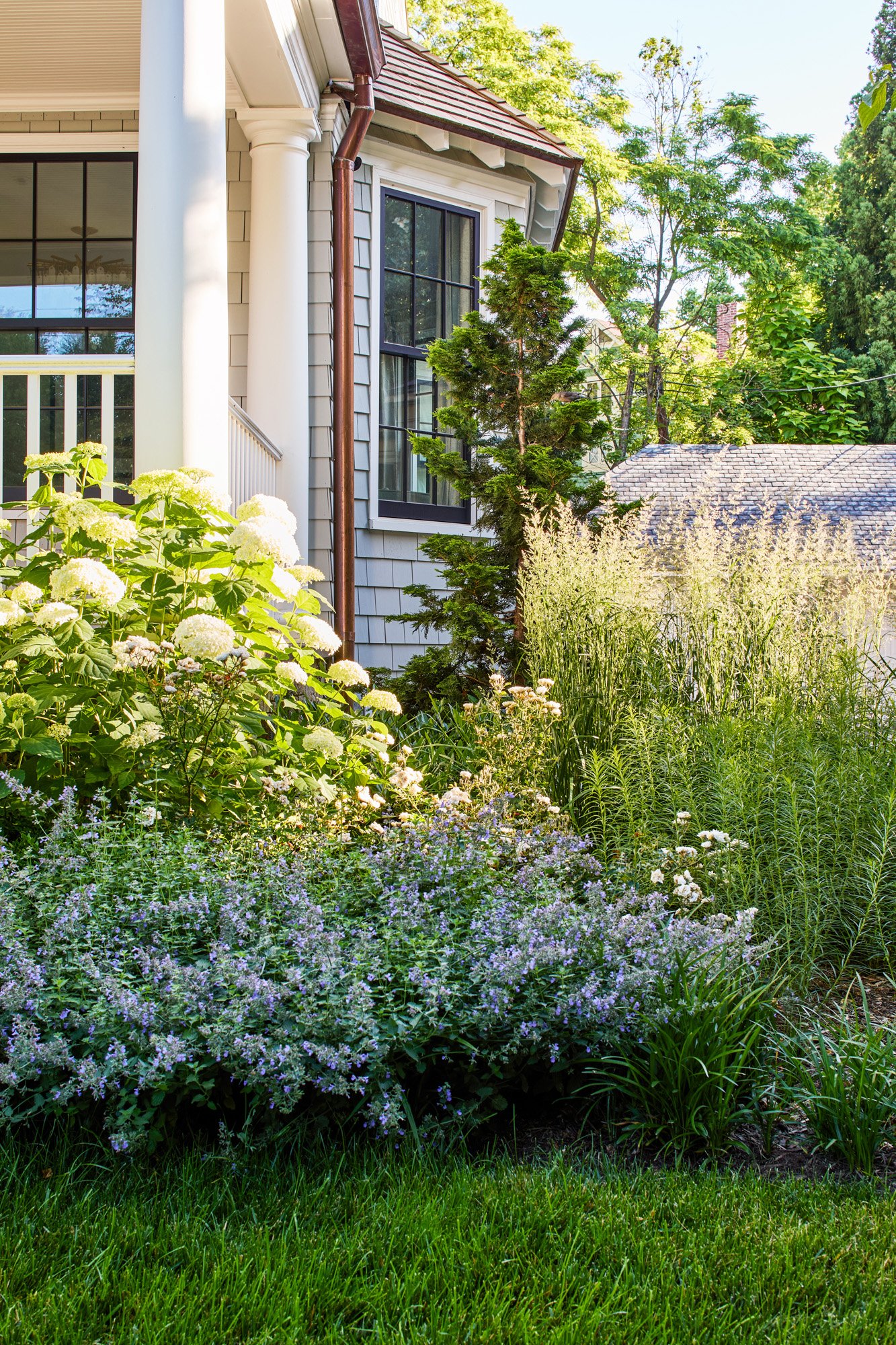

In recent years, “we’ve been getting more and more clients to understand the benefits of native planting,” says Edamarie Mattei, the founder of Backyard Bounty in Middletown, Maryland, a firm that’s built its business around designing these landscapes. The benefits are numerous: Plants that are native to the region can support birds and pollinators, such as bees and butterflies, and require minimal maintenance after they’re established.
Mattei’s go-tos include native grasses, viburnum, and oaks, which together can help create a layered garden. Asters and goldenrod (so-called keystone plants because they play an outsize role in an ecosystem’s health) have an added benefit of infusing a garden with color in the fall—meaning no mums necessary. With our region subject to both drought and torrential rainstorms, Mattei also suggests plants that can handle extremes: sweetbay magnolias, river birches, and other grasses and perennials known as “riparian buffer plants.” These species have adapted to divergent conditions alongside riverbanks.
To sufficiently support the local ecosystem, the goal is a garden that is 75 percent native, says Mattei. But if you’re starting from scratch, even adding a few plants a year can make a difference.
Lawn Pivot

Once a symbol of the American dream, the lawn has lost its allure as homeowners have realized how much water and fertilizer are needed to maintain it. Mattei says it’s worth asking how much lawn you really need. Replacing the entire lawn with a meadow dotted by native plants can be a significant project, and Mattei says it’s more common to design a “meadow-influenced border”: native grasses, colorful perennials, trees, and shrubs—a less manicured alternative to a more traditional expanse of green.
Stormwater Statement
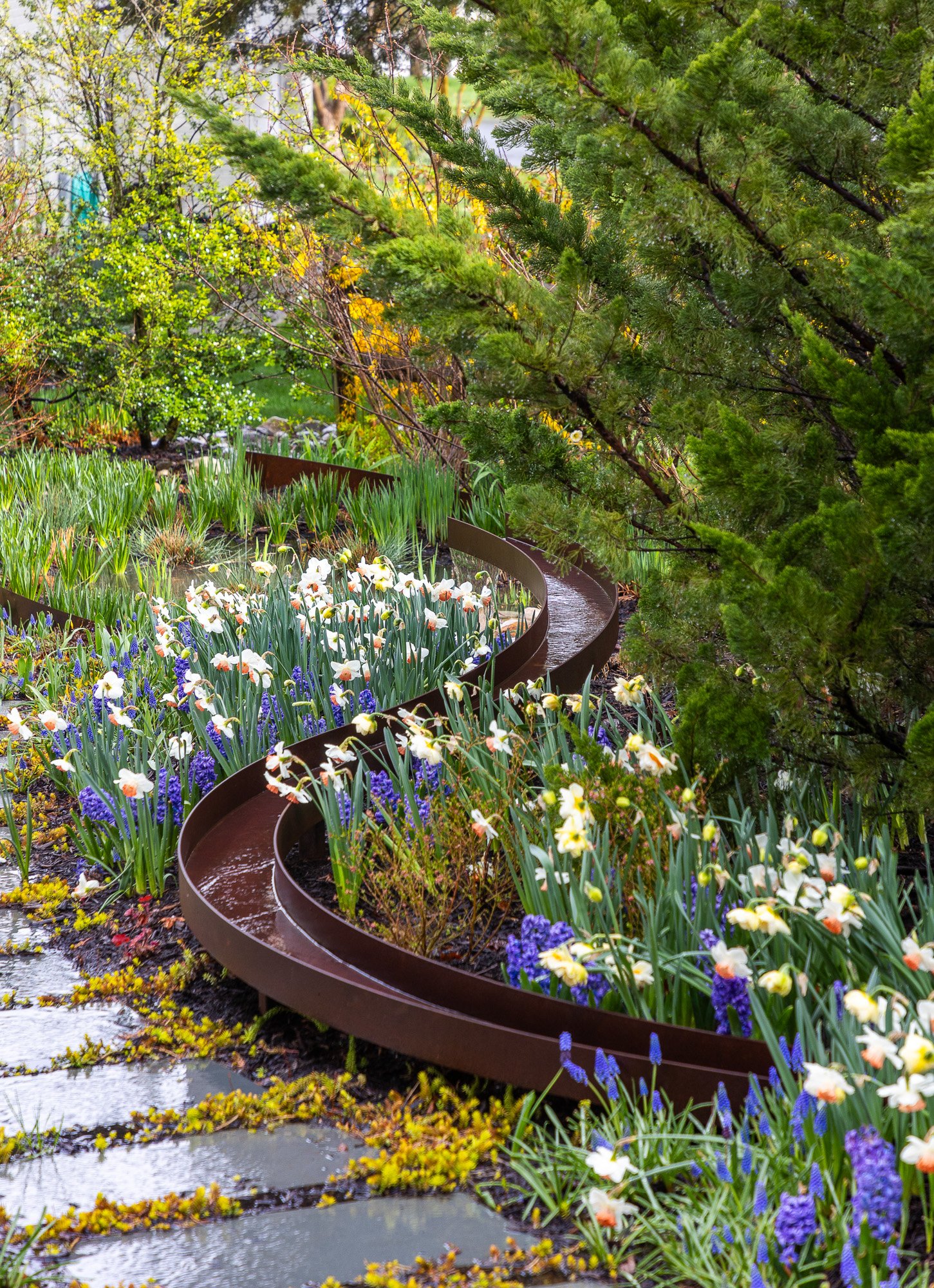
Stormwater management may not stir the passions, but in our age of extreme weather, it’s become an important consideration for many homeowners, who might have yards—or basements—prone to flooding. There are a variety of ways to handle stormwater, including bioretention planters made of brick or stone, as well as rain gardens, often constructed using gravel and/or sand for absorption and populated with native plants.
But there’s also a way to elevate the concept and turn it into something poetic. For a project in McLean, Moody Graham designed a catch basin that captured rainfall and then delivered the excess into a system of steel channels that snake through the landscape like a mini Richard Serra sculpture. The channels carry water into a rain garden, creating “a very artful moment during a rainstorm,” says Moody.
Backyard Bounty
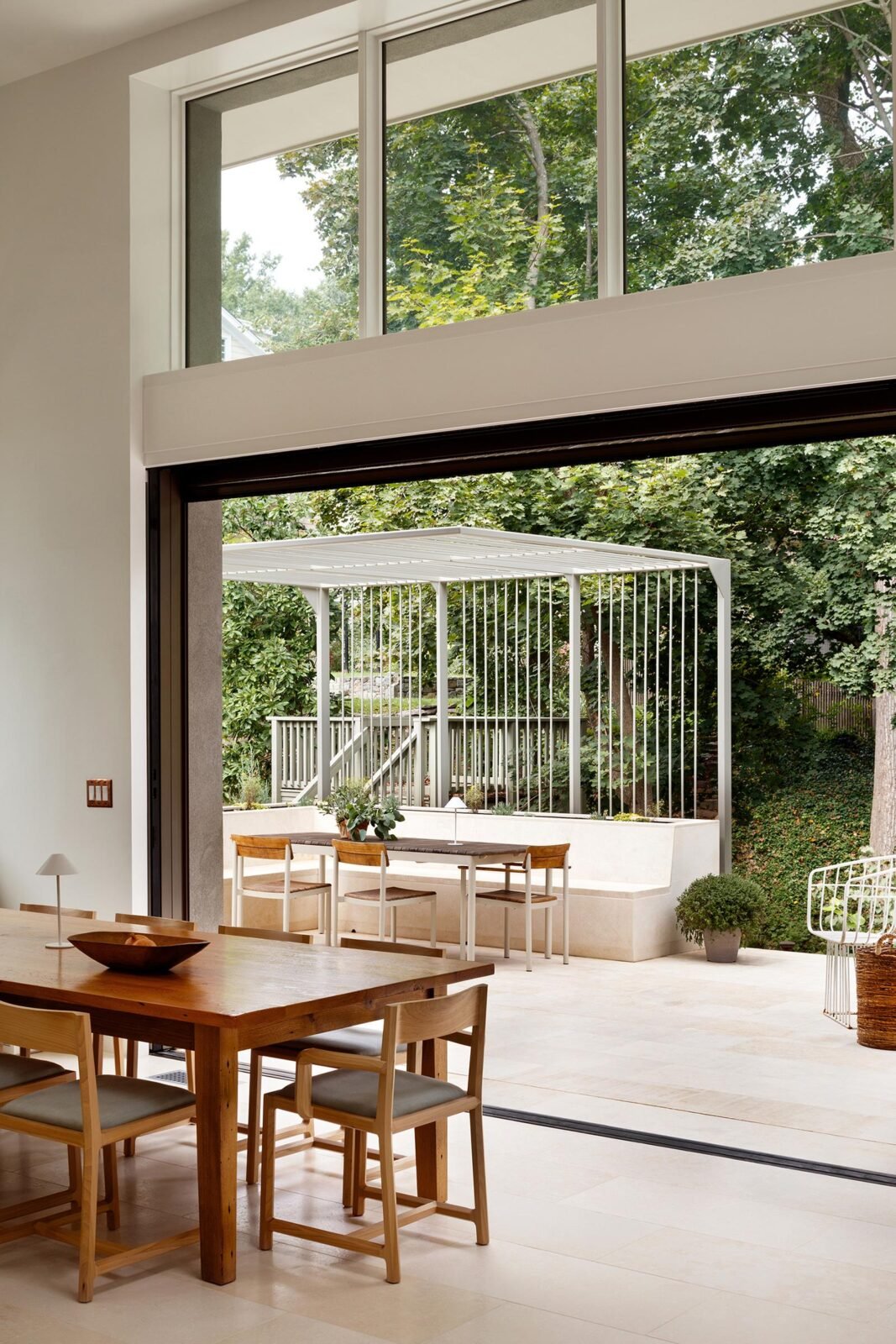
Many of us may have a few pots of herbs on our decks or patios. But why not turn your entire garden into an edible landscape? For a project in Cleveland Park, Moody Graham had a client interested in permaculture, or self-sustaining ecosystems. The firm designed a landscape with pawpaws, low-bush blueberries, mountain mint, elderberry, and native honeysuckle, as well as apple, pomegranate, and fig trees. And it added grape and passionfruit vines to a cantilevered pergola in the backyard. “It’s not a vegetable garden,” says Moody—various native plants and perennials are folded into the design—but rather “an edible garden.”
Blurring Boundaries
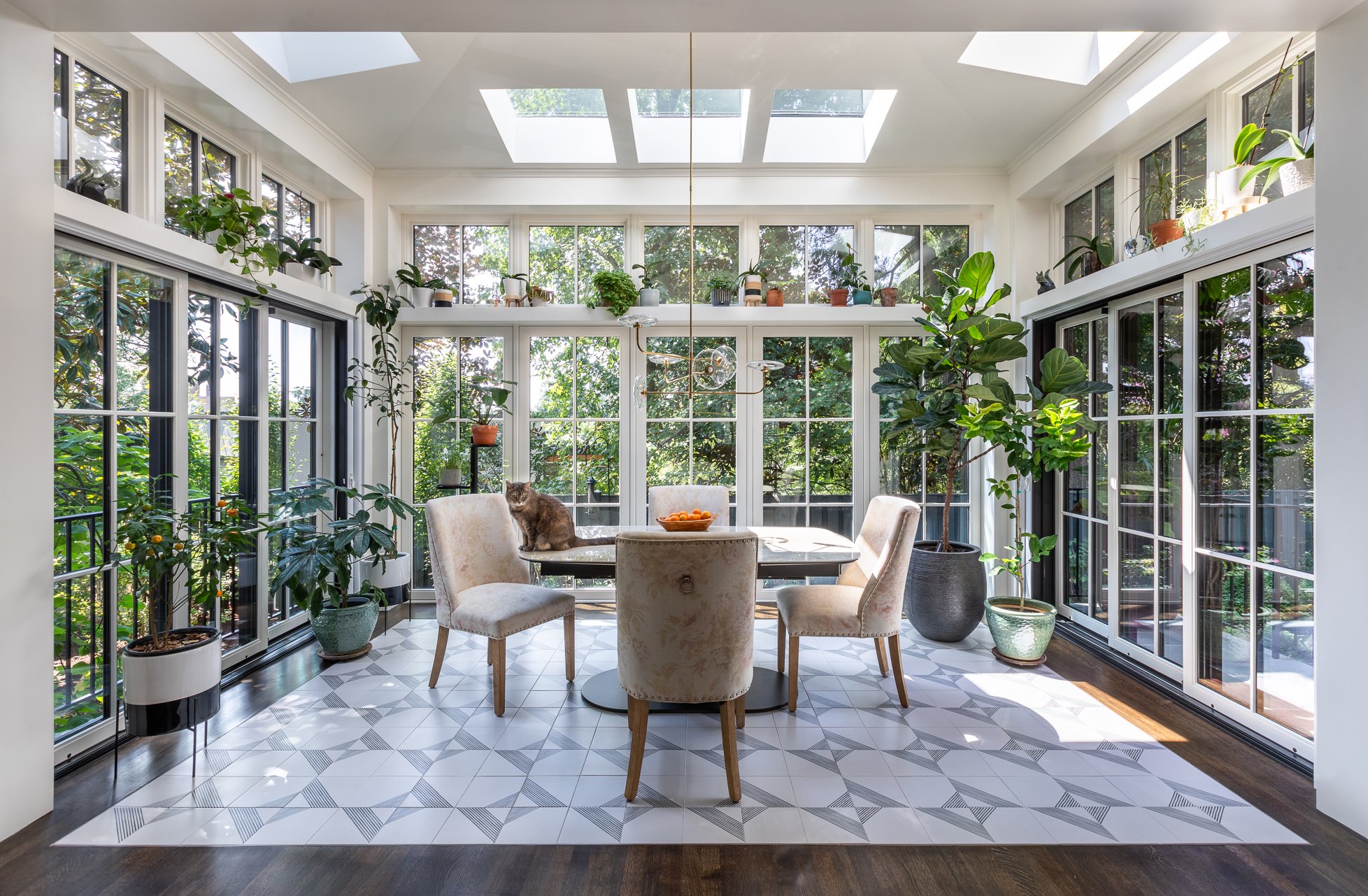
There’s often a stark divide between our indoor and outdoor spaces, but in many cases it helps to soften those distinctions and better integrate inside and out. For a project in Cathedral Heights, Richardson realized the house didn’t get much light in the back. Part of the issue was a landscape in need of pruning, but he also saw that part of the solution was architectural. Alexandria’s Lyon Architecture joined the project and designed an orchid/cat room on the back of the house. It functions as a solarium with sliding glass doors on three sides that not only is home to the family pet (and a selection of plants) but also blurs the transition between indoors and out. During the day, light from the garden floods through the room into the house. After dark, the space glows like a night-light in the garden.
Illuminating Idea
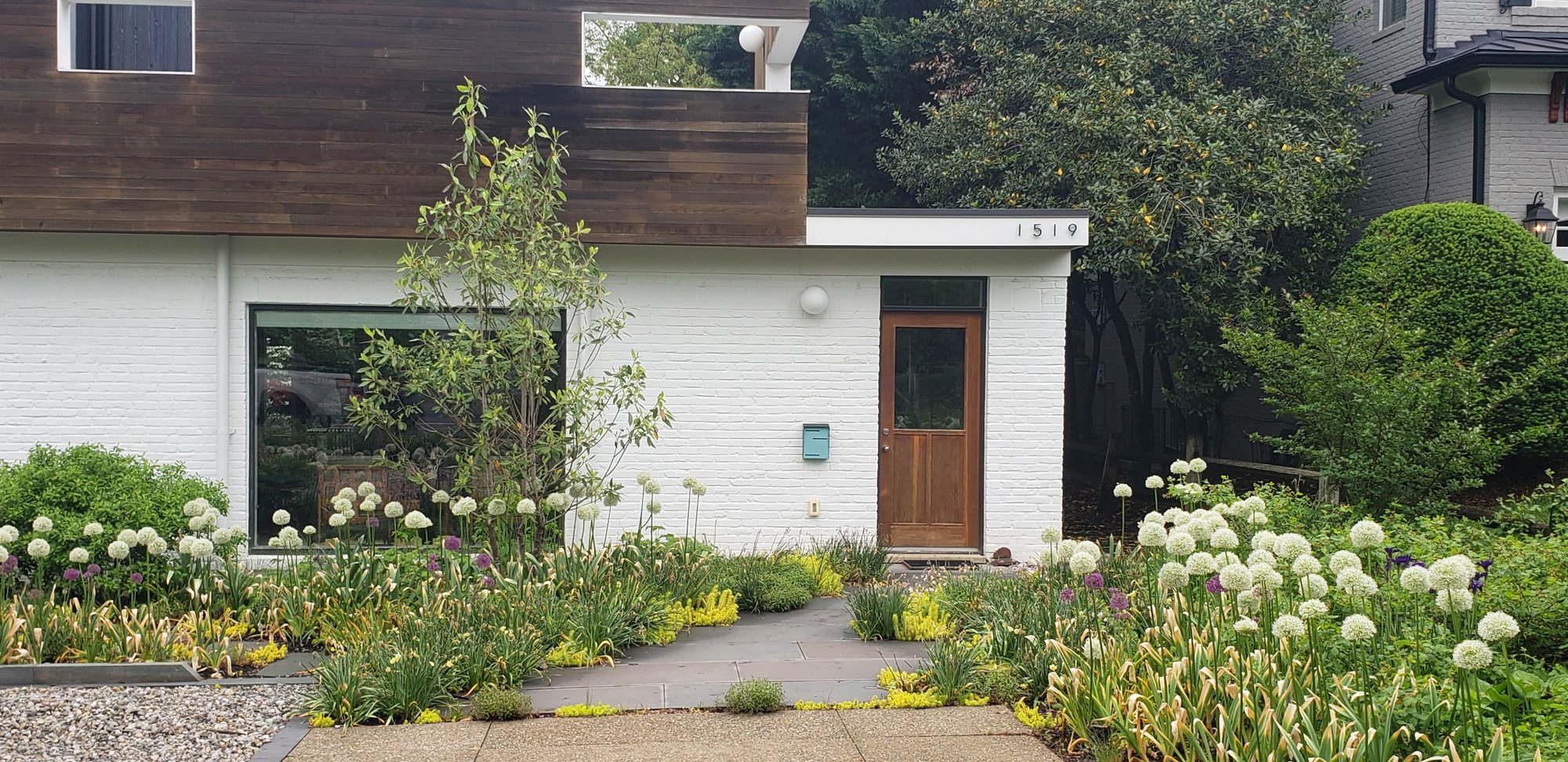
On the subject of light: It can often be an afterthought in a landscaping project, says D. Miles Barnard, the founder of South Fork Studio Landscape Architecture in Chestertown, Maryland. Many projects include functional lighting, intended to get you safely around at night—path and stair lights, for instance, or thin recessed lights that illuminate the deck edge.
But light can also be used as a design element to enhance the landscape. Downlights on a pergola or porch column, or lights that focus on specific clusters of plants, can help create a pleasing ambiance. Lighting a few plants or trees on the perimeter can also help give depth to your space at night, Barnard says. And if you don’t have the budget for lighting but are adding paving, he recommends installing sleeves underneath so it’s easy to run wiring when you’re ready to upgrade the design.
Slow Design
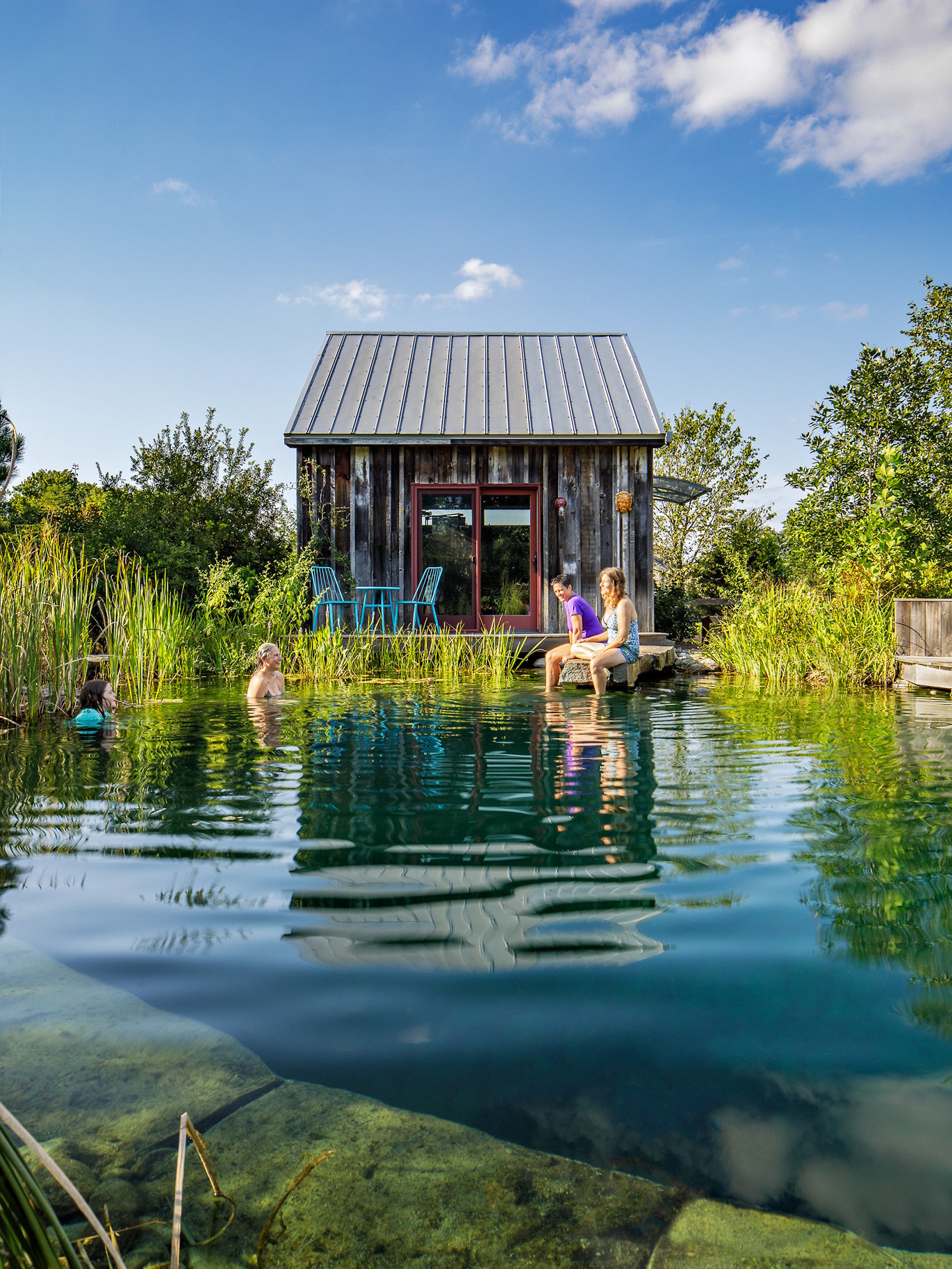
Especially if you’ve just moved to a new house, get to know your space and how you use it before embarking on a project. Even after you’ve come up with a design, “allow some time to sit with it before you immediately jump into construction,” says Barnard. Waiting may have an added benefit: Like a few of the designers we spoke with, Barnard prefers planting in the fall, because plants can better establish their root systems before the following summer.
Landscape design in DC can be a tricky proposition. Many of us have a small postage stamp of a backyard, but we ask a lot of it. We may want to relax on the patio with a drink after work, cultivate a vegetable garden, have a spot to grill or eat with friends. When the home became a sanctuary during the pandemic, some of us decided to overhaul our outdoor spaces. “People were looking at their landscapes saying, okay, this is an opportunity to think about it in a different way, a more functional way,” says Ryan Moody, founding principal of Moody Graham, a DC landscape-architecture firm.
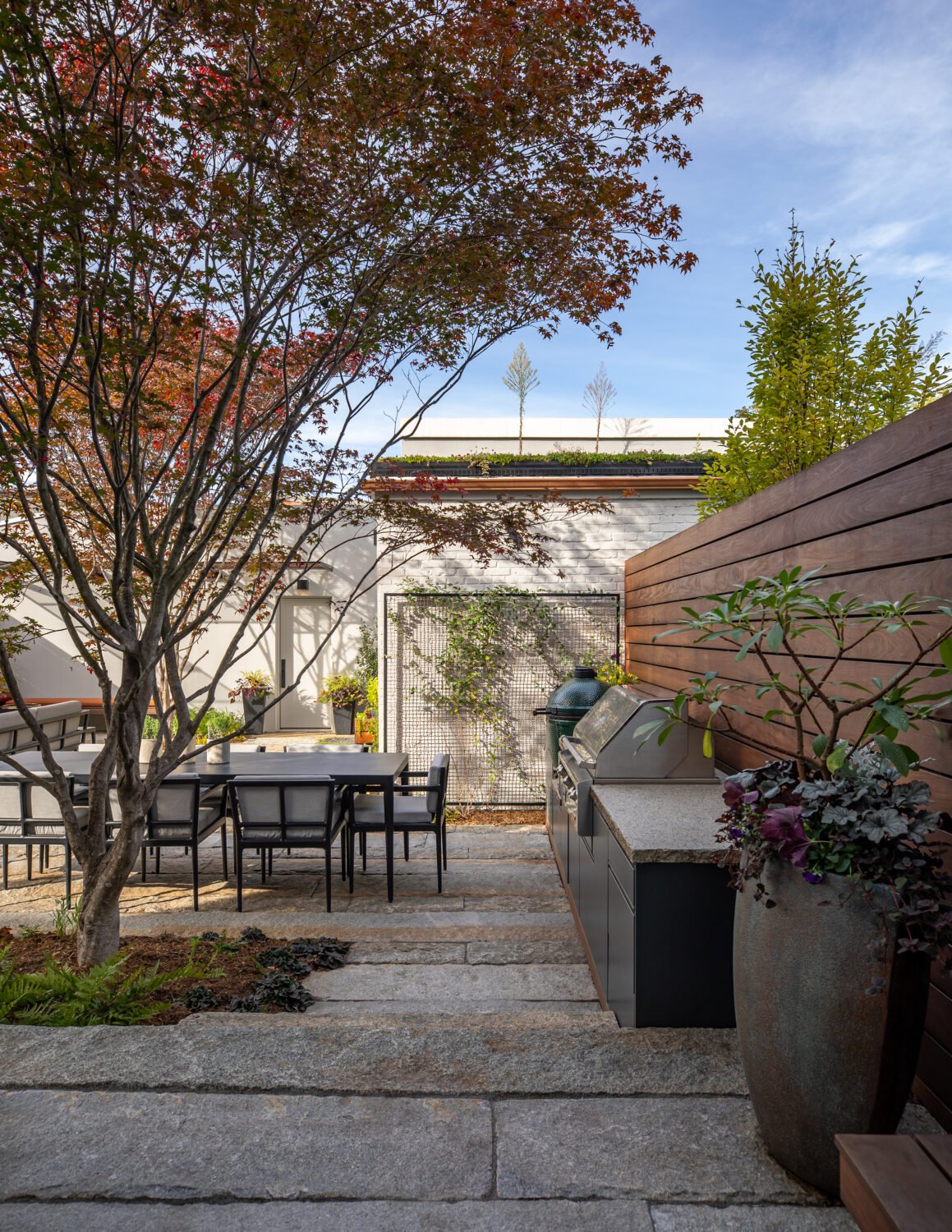
Maybe our yards felt a bit tired and needed an update. Or maybe following a drought we decided to go native, updating the garden with indigenous plants. Or maybe, if we had the space, we took the plunge and built a pool.
Post-pandemic, “things have not slowed down,” says Joseph Richardson, founding principal of Richardson & Associates Landscape Architecture, referring to the growing demand for landscape design. A couple trends he’s noticed: the rise of the outdoor kitchen (now largely considered a “requirement”) and an embrace of wellness. Saunas, cold plunges, hot tubs, steam showers in pool houses, bocce and pickleball and tennis courts—such amenities have boomed in the luxury market.
While those may be nonstarters for people with smaller yards (or budgets), we’ve compiled a list of ideas from some of the top landscape designers in the area that can be helpful for any size project—and give your outdoor space a summer refresh.
Home Grown


In recent years, “we’ve been getting more and more clients to understand the benefits of native planting,” says Edamarie Mattei, the founder of Backyard Bounty in Middletown, Maryland, a firm that’s built its business around designing these landscapes. The benefits are numerous: Plants that are native to the region can support birds and pollinators, such as bees and butterflies, and require minimal maintenance after they’re established.
Mattei’s go-tos include native grasses, viburnum, and oaks, which together can help create a layered garden. Asters and goldenrod (so-called keystone plants because they play an outsize role in an ecosystem’s health) have an added benefit of infusing a garden with color in the fall—meaning no mums necessary. With our region subject to both drought and torrential rainstorms, Mattei also suggests plants that can handle extremes: sweetbay magnolias, river birches, and other grasses and perennials known as “riparian buffer plants.” These species have adapted to divergent conditions alongside riverbanks.
To sufficiently support the local ecosystem, the goal is a garden that is 75 percent native, says Mattei. But if you’re starting from scratch, even adding a few plants a year can make a difference.
Lawn Pivot

Once a symbol of the American dream, the lawn has lost its allure as homeowners have realized how much water and fertilizer are needed to maintain it. Mattei says it’s worth asking how much lawn you really need. Replacing the entire lawn with a meadow dotted by native plants can be a significant project, and Mattei says it’s more common to design a “meadow-influenced border”: native grasses, colorful perennials, trees, and shrubs—a less manicured alternative to a more traditional expanse of green.
Stormwater Statement

Stormwater management may not stir the passions, but in our age of extreme weather, it’s become an important consideration for many homeowners, who might have yards—or basements—prone to flooding. There are a variety of ways to handle stormwater, including bioretention planters made of brick or stone, as well as rain gardens, often constructed using gravel and/or sand for absorption and populated with native plants.
But there’s also a way to elevate the concept and turn it into something poetic. For a project in McLean, Moody Graham designed a catch basin that captured rainfall and then delivered the excess into a system of steel channels that snake through the landscape like a mini Richard Serra sculpture. The channels carry water into a rain garden, creating “a very artful moment during a rainstorm,” says Moody.
Backyard Bounty

Many of us may have a few pots of herbs on our decks or patios. But why not turn your entire garden into an edible landscape? For a project in Cleveland Park, Moody Graham had a client interested in permaculture, or self-sustaining ecosystems. The firm designed a landscape with pawpaws, low-bush blueberries, mountain mint, elderberry, and native honeysuckle, as well as apple, pomegranate, and fig trees. And it added grape and passionfruit vines to a cantilevered pergola in the backyard. “It’s not a vegetable garden,” says Moody—various native plants and perennials are folded into the design—but rather “an edible garden.”
Blurring Boundaries

There’s often a stark divide between our indoor and outdoor spaces, but in many cases it helps to soften those distinctions and better integrate inside and out. For a project in Cathedral Heights, Richardson realized the house didn’t get much light in the back. Part of the issue was a landscape in need of pruning, but he also saw that part of the solution was architectural. Alexandria’s Lyon Architecture joined the project and designed an orchid/cat room on the back of the house. It functions as a solarium with sliding glass doors on three sides that not only is home to the family pet (and a selection of plants) but also blurs the transition between indoors and out. During the day, light from the garden floods through the room into the house. After dark, the space glows like a night-light in the garden.
Illuminating Idea

On the subject of light: It can often be an afterthought in a landscaping project, says D. Miles Barnard, the founder of South Fork Studio Landscape Architecture in Chestertown, Maryland. Many projects include functional lighting, intended to get you safely around at night—path and stair lights, for instance, or thin recessed lights that illuminate the deck edge.
But light can also be used as a design element to enhance the landscape. Downlights on a pergola or porch column, or lights that focus on specific clusters of plants, can help create a pleasing ambiance. Lighting a few plants or trees on the perimeter can also help give depth to your space at night, Barnard says. And if you don’t have the budget for lighting but are adding paving, he recommends installing sleeves underneath so it’s easy to run wiring when you’re ready to upgrade the design.
Slow Design

Especially if you’ve just moved to a new house, get to know your space and how you use it before embarking on a project. Even after you’ve come up with a design, “allow some time to sit with it before you immediately jump into construction,” says Barnard. Waiting may have an added benefit: Like a few of the designers we spoke with, Barnard prefers planting in the fall, because plants can better establish their root systems before the following summer.
This article appears in the May 2025 issue of Washingtonian.


